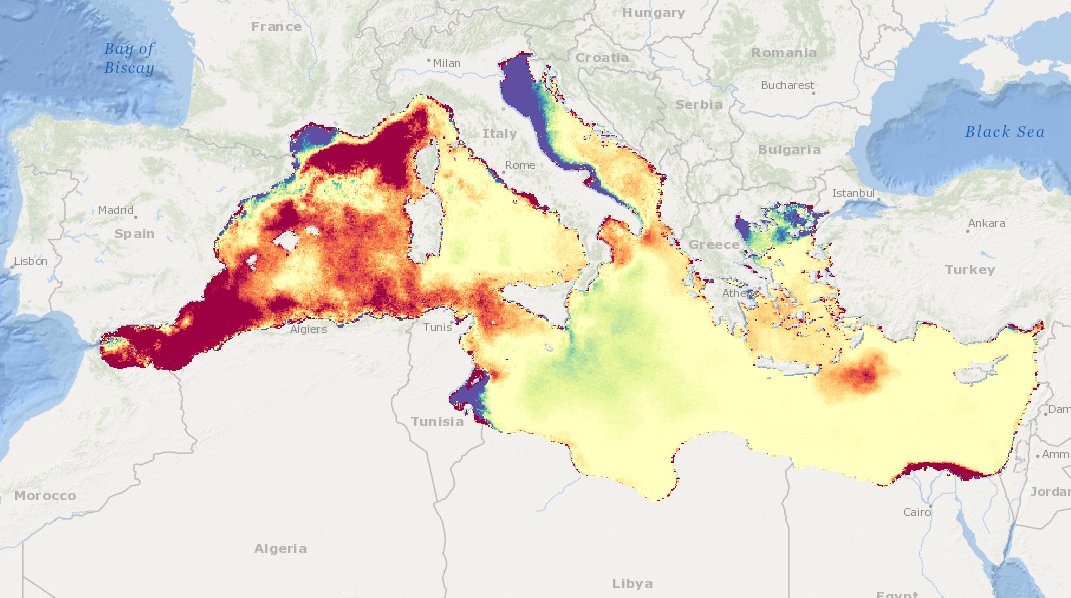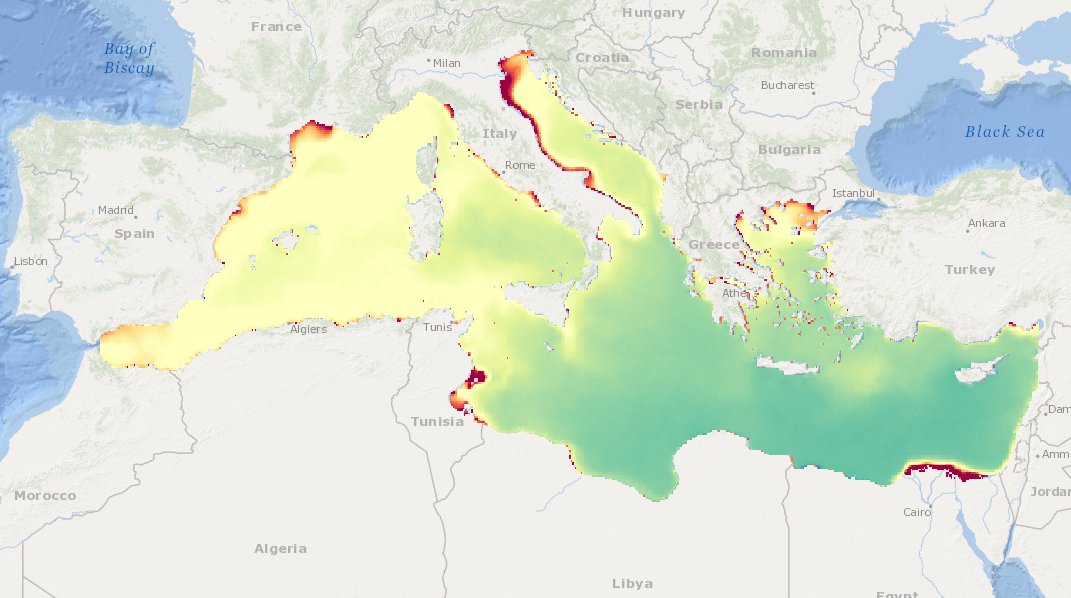time series
Type of resources
Available actions
Topics
Keywords
Contact for the resource
Provided by
Years
Formats
Representation types
-

Map of Chlorophyll trends (UNITS: mg/m3/year) from L4 satellite ocean color data FOR THE PAST 10 YEARS (2005-2014)
-

Maps of Chlorophyll concentration seasonal climatologies (i.e., Winter, Spring, Summer, and Fall) over the Mediterranean Sea relative to the period 1998-2009.
-

The PHYTOBS-MARCOBOLO dataset comprises long-term time series on marine microphytoplankton, from 2003 to 2021, along the entire French metropolitan coastline. Microphytoplankton data cover microscopic taxonomic identifications and counts. The PHYTOBS-MARCOBOLO dataset corresponds to a dataset extracted from the PHYTOBS network (DOI:10.17882/85178). The PHYTOBS network provides the scientific community and stakeholders with validated and qualified data on the biomass, abundance and composition of marine microphytoplankton in coastal and lagoon waters, with the aim of supporting scientific research. PHYTOBS-MARCOBOLO is a dataset used as part of the Horizon Europe MARCO-BOLO project (https://marcobolo-project.eu/), in which we are currently working to understand and analyze multi-decadal trends in coastal and marine biodiversity on a European scale. The PHYTOBS-MARCOBOLO dataset gathers data from 18 sampling sites, selected from the PHYTOBS-Network dataset according to requirements of time series quality and geographical location of sampling sites established as part of the MARCO-COLO project. This dataset was also formatted according to a template imposed for the European project.
-

The ClimateFish database collates abundance data of 15 fish species proposed as candidate indicators of climate change in the Mediterranean Sea. An initial group of eight Mediterranean indigenous species (Epinephelus marginatus, Thalassoma pavo, Sparisoma cretense, Coris julis, Sarpa salpa, Serranus scriba, Serranus cabrilla and Caranx crysos) with wide distribution, responsiveness to temperature conditions and easy identification were selected by a network of Mediterranean scientists joined under the CIESM programme ‘Tropical Signals’ (https://www.ciesm.org/marine/programs/tropicalization.htm; Azzurro et al. 2010). Soon after, and thanks to the discussion with other expert groups and projects, C. crysos was no longer considered, and Lessepsian fishes (Red Sea species entering the Mediterranean through the Suez Canal) were included, namely: Fistularia commersonii, Siganus luridus, Siganus rivulatus, Pterois miles, Stephanolopis diaspros, Parupeneus forskali, Pempheris rhomboidea and Torquigener flavimaculosus. Considering the trend of increase of these species in the Mediterranean Sea (Golani et al. 2021) and their projected distribution according to climate change scenarios (D’Amen and Azzurro, 2020), more data on these tropical invaders are expected to come in the future implementation of the study. Data were collected according to a simplified visual census methodology (Garrabou et al. 2019) along standard transects of five minutes performed at a constant speed of 10m/min, corresponding approximately to an area of 50x5m. Four different depth layers were surveyed: 0-3m, 5-10 m, 11-20 m, 21-30 m. So far, the ClimateFish database includes fish counts collected along 3142 transects carried out in seven Mediterranean countries between 2009 and 2021, for a total number of 101'771 observed individuals belonging to the 15 fish species. Data were collected by a large team of researchers which joined in a common monitoring strategy supported by different international projects, which are acknowledged below. This database, when associated with climate data, offers new opportunities to investigate spatio-temporal effects of climate change in the Mediterranean Sea and test the effectiveness of each species as a possible climate change indicator. Contacts: ernesto.azzurro(at)cnr.it References: Azzurro E., Maynou F., Moschella P. (2010). A simplified visual census methodology to detect variability trends of coastal mediterranean fishes under climate change scenarios. Rapp. Comm. int. Mer Médit., 39. D’Amen, M. and Azzurro, E. (2020). Lessepsian fish invasion in Mediterranean marine protected areas: a risk assessment under climate change scenarios. ICES Journal of Marine Science, 77(1), pp.388-397. Garrabou, J., Bensoussan, N., Azzurro, E. (2019). Monitoring climate-related responses in Mediterranean marine protected areas and beyond: five standard protocols. Golani D., Azzurro E., Dulčić J., Massutí E., Orsi-Relini L. (2021). Atlas of Exotic Fishes in the Mediterranean Sea. 2nd edition [F. Briand, Ed.] 365 pages. CIESM Publishers, Paris, Monaco. ISBN number 978-92-990003-5-9
 Catalogue PIGMA
Catalogue PIGMA